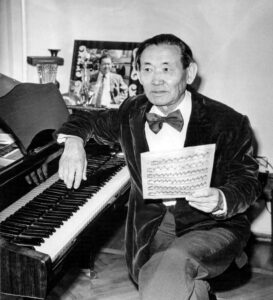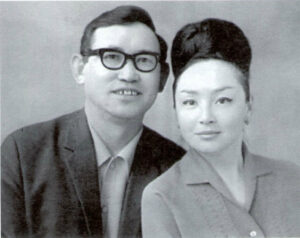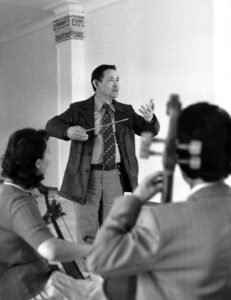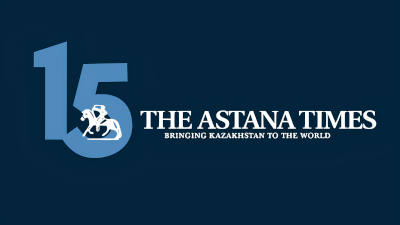ASTANA – Kazakhstan celebrates the 100th anniversary of legendary composer and conductor Nurgisa Tlendiyev on April 1. Tlendiyev, known for his contributions to Kazakh music, composed over 500 works across various genres, including songs, kuis [traditional musical composition], romances, overtures, poems, cantatas, operas, and ballets.

Nurgisa Tlendiyev, a legendary Kazakh composer and conductor. Photo creditL Wikipedia
Born in 1925 in Shilikemer, Ili District of the Almaty Region, the village was later renamed in his honor. Tlendiyev inherited a passion for music from his father, who introduced him to the dombra. His mother, who loved to sing, gifted him a piano when he turned five.
Mentorship and mastery
As a teenager, Tlendiyev impressed teachers and peers with his dombra skills. In 1937, renowned composer Akhmet Zhubanov, who was forming Kazakhstan’s first folk instrument orchestra, recognized his talent and took him under his mentorship. By the age of 12, Tlendiyev was appointed the orchestra’s concertmaster, and at 14, he assisted the chief conductor. Upon graduation, Zhubanov gifted him a custom-made dombra, which Tlendiyev later named after his wife, Dariga.
Tlendiyev cherished his lifelong friendship with Zhubanov, often crediting him for shaping his career.
“Zhubanov taught me everything: to love and understand folk and classical music, to work hard and find joy in creativity, and to love life in all its forms. I owe him what I’ve become,” he once said.
In 1943, during the Second World War, Tlendiyev enlisted in the army at just 16, altering his birthdate on official records to appear older.
After the war, he became one of the first students of the Faculty of Folk Instruments at the Kazakh State Conservatory. Already an experienced orchestral musician, he took charge of the Orchestra of Folk Instruments of the Radio Committee. Understanding that conducting required specialized knowledge, he later enrolled at the Moscow Conservatory under Professor Anosov, becoming the first Kazakh student in the conducting program.

Tlendiyev with his wife Dariga, a well-known actress and honoured artist of Kazakhstan. Photo credit: e-history.kz
After graduating in 1953, Tlendiyev became chief conductor of the Abai Kazakh Opera and Ballet Theater, where he composed the ballet poem “Orteke”, the ballet “Dear Friendship”, and the cantata “My Kazakhstan”.
In 1961, he was appointed chief conductor and artistic director of the Kurmangazy Kazakh State Academic Orchestra of Folk Instruments. Though he held the position for only three years, it was one of the most productive periods of his career. During this time, he collaborated with Uyghur composer Kuddus Kuzhamyarov on the opera “Golden Mountains” and composed orchestral works such as “Ata Tolgau”, “Halyk Kuanyshy”, and “Kairat”. His music was also featured in the iconic Kazakh film “My Name is Kozha”, directed by Abdulla Karsakbayev.
In 1968, Tlendiyev became the chief editor of the Kazakhfilm music department. His compositions appeared in numerous films, including “Why the Swallow Has the Tail with Little Horns?”, “Red Yurt”, “Chase in the Steppe”, and “Journey to Childhood”. For a well-known Kazakh love tragedy, the “Kyz Zhibek” film, he composed the “Akku” [Swan] kui.
During his tenure at Kazakhfilm, the composer formed close friendships with prominent Kazakh poets, including Mukagali Makatayev. The two collaborated on setting Makatayev’s poetry to music, producing 32 songs in just one month, including “Saryzhailau” [Yellowing], “Salem Sagan Zhetisu” [Hello, Zhetisu], and “Men Seni Izdedim” [I was looking for you].
His daughter, Dinzukhra Tlendiyeva, recalled his unique creative process at home.
“To reach our bedrooms, we had to tiptoe through a long corridor so as not to disturb our dad. He worked on a small coffee table, sitting on the bed, without instruments—the music was in his head. Around him were books, tea, and silence,” she said in an interview with Steppe.
Otrar Sazy: reviving ancient sounds

Tlendiyev at the rehearsal of the Otyrar Sazy Orchestra. Photo credit: news.pianos.kz
In 1982, Tlendiyev led the folklore-ethnographic orchestra Otyrar Sazy, serving as its artistic director and chief conductor. This ensemble, his creative pinnacle, revived ancient Kazakh musical traditions by incorporating instruments like the sazsyrnai and sybyzgy. His orchestral works emphasized the solo role of instruments, particularly the dombra, blending Kazakh improvisational styles with European orchestral techniques.
Musicologist and Union of Composers member Yuriy Aravin once said: “He was not only a brilliant dombra player, conductor, and composer, but also a genius of communication. He believed that a musician’s duty was not just to compose and perform but to engage the listener in the creative process.”
Tlendiyev died on Oct. 15, 1998. He was named a People’s Artist of the USSR and awarded Kazakhstan’s highest honor, Halyk Kaharmany [National Hero]. In 2011, a monument in his honor was unveiled in Almaty.
The Nurgisa Tlendiyev Memorial Museum opened in 2014 in the apartment where he lived from 1979 to 1998. The museum showcases his musical instruments, manuscripts, books, photographs, concert costumes, and personal belongings, offering a glimpse into the life and legacy of one of Kazakhstan’s greatest composers.


